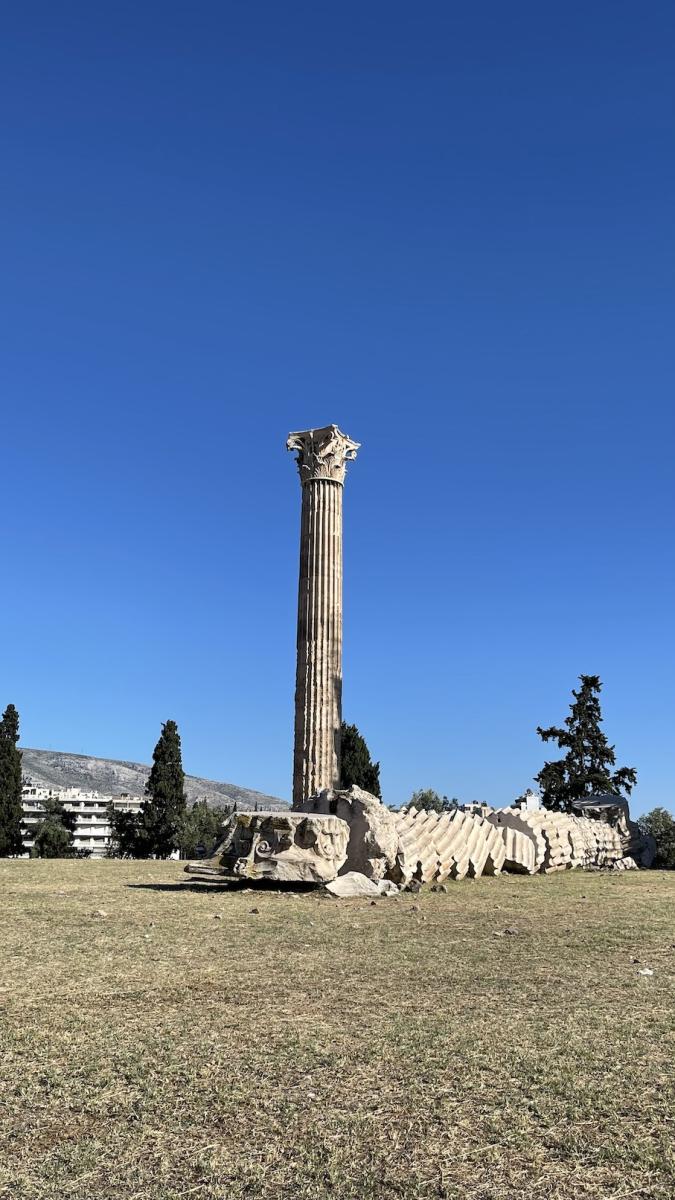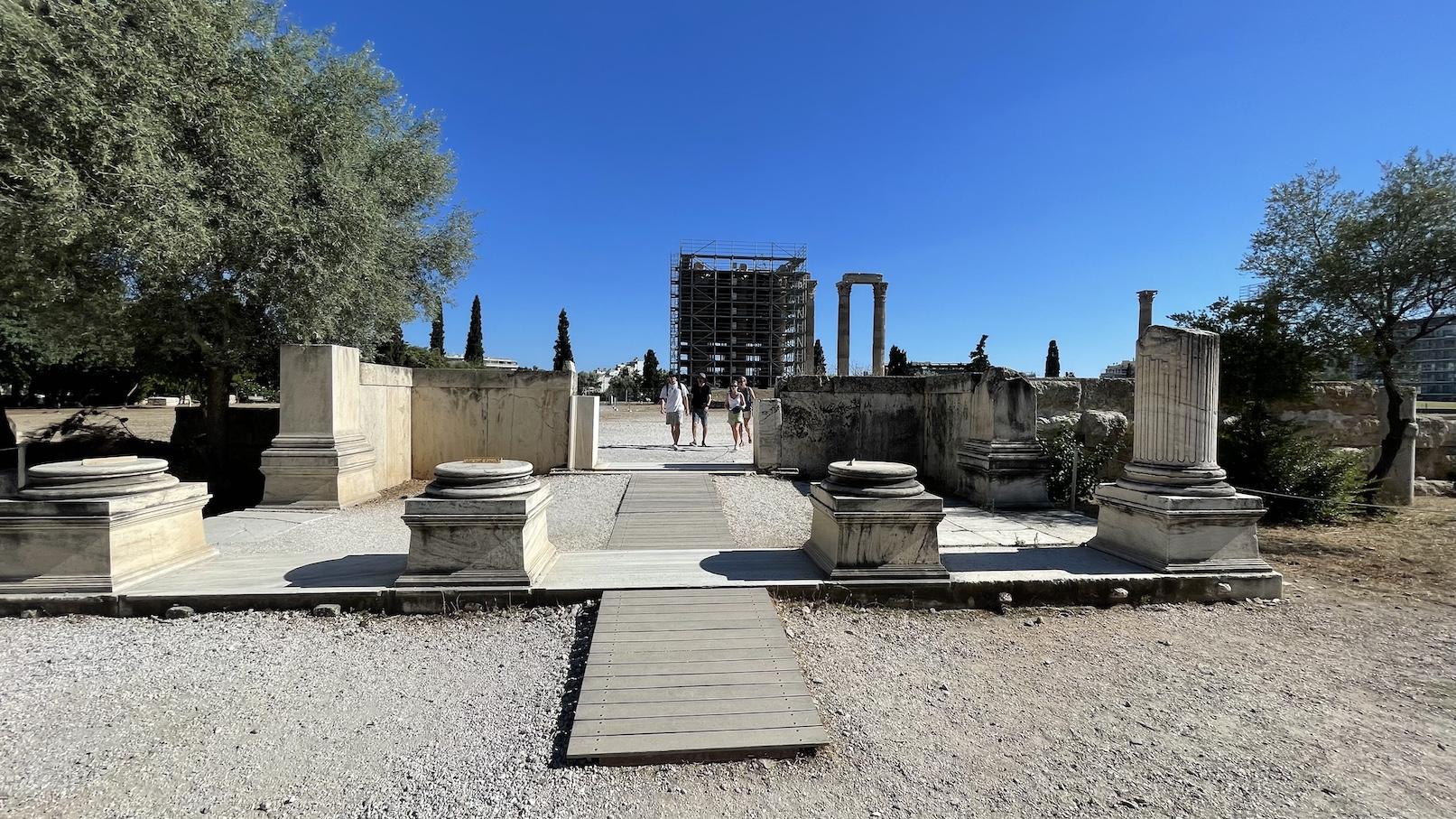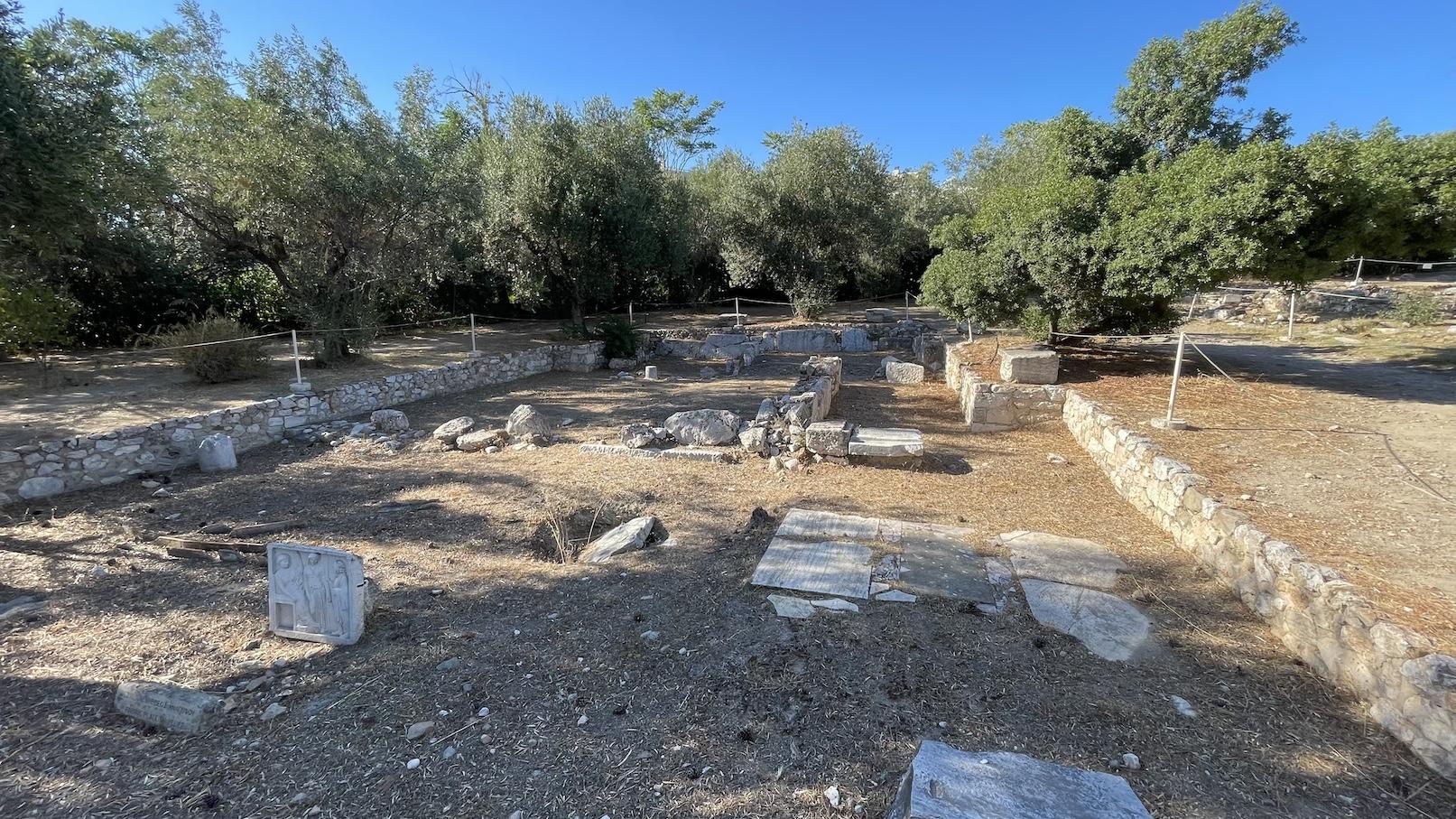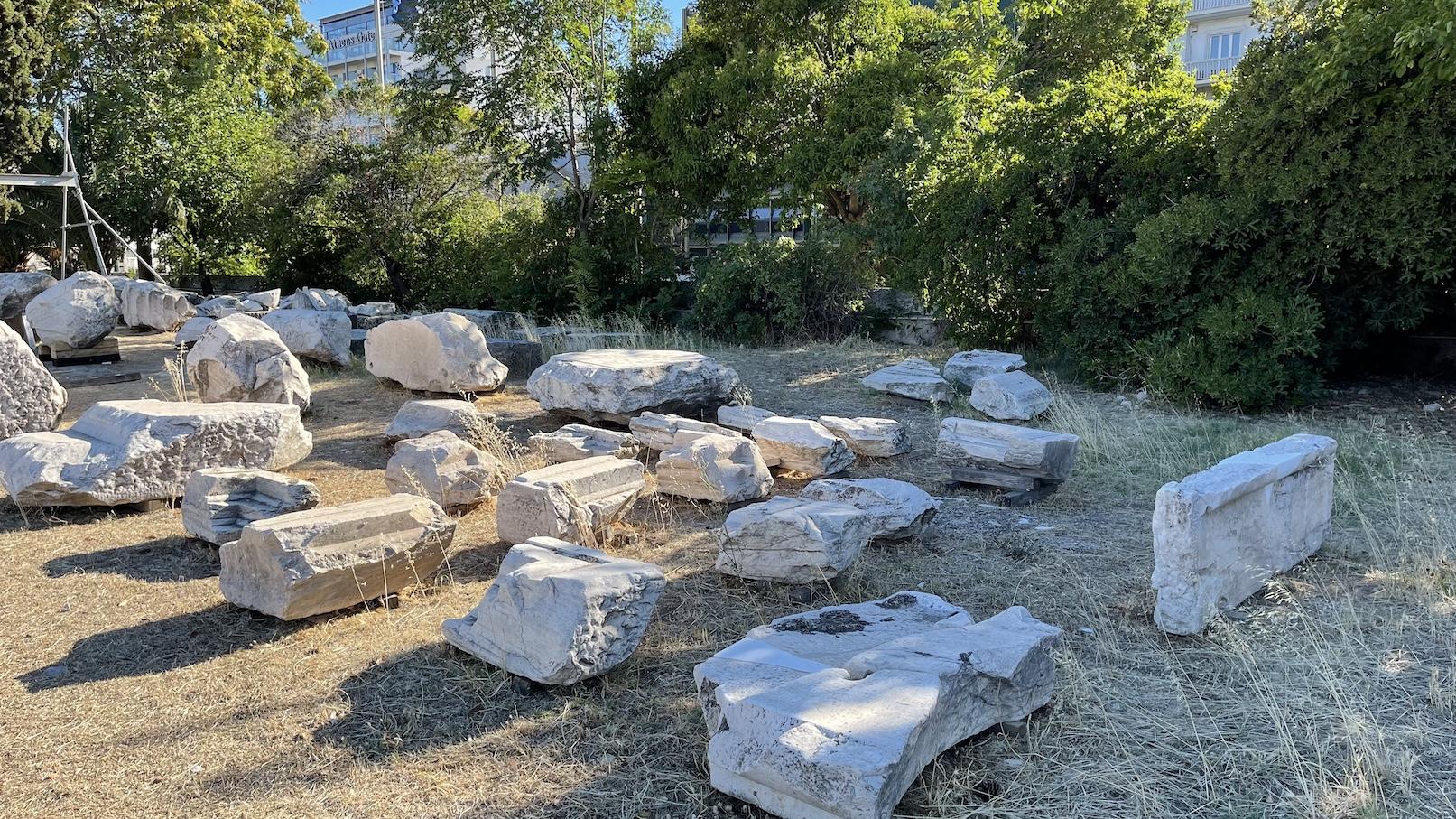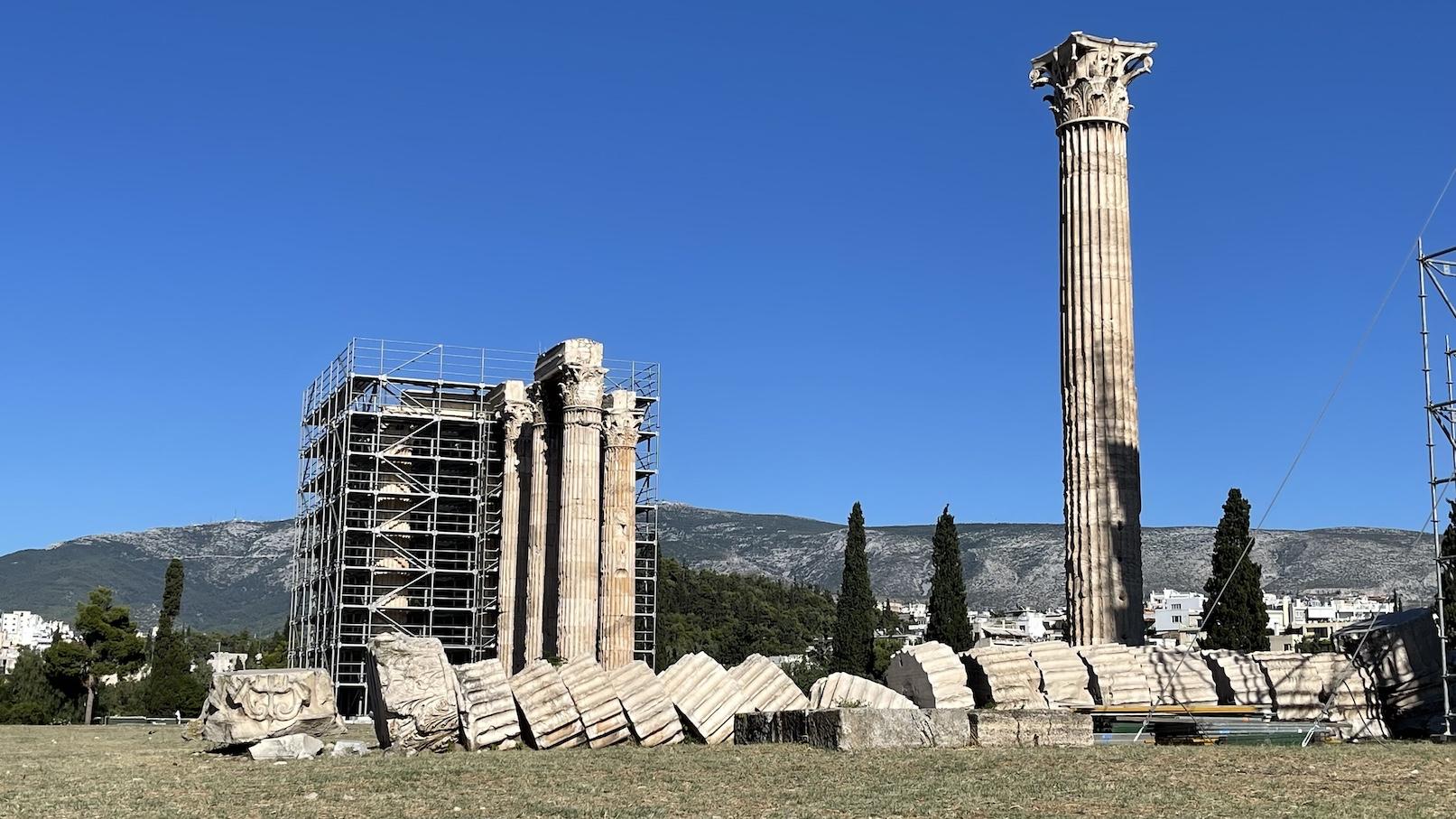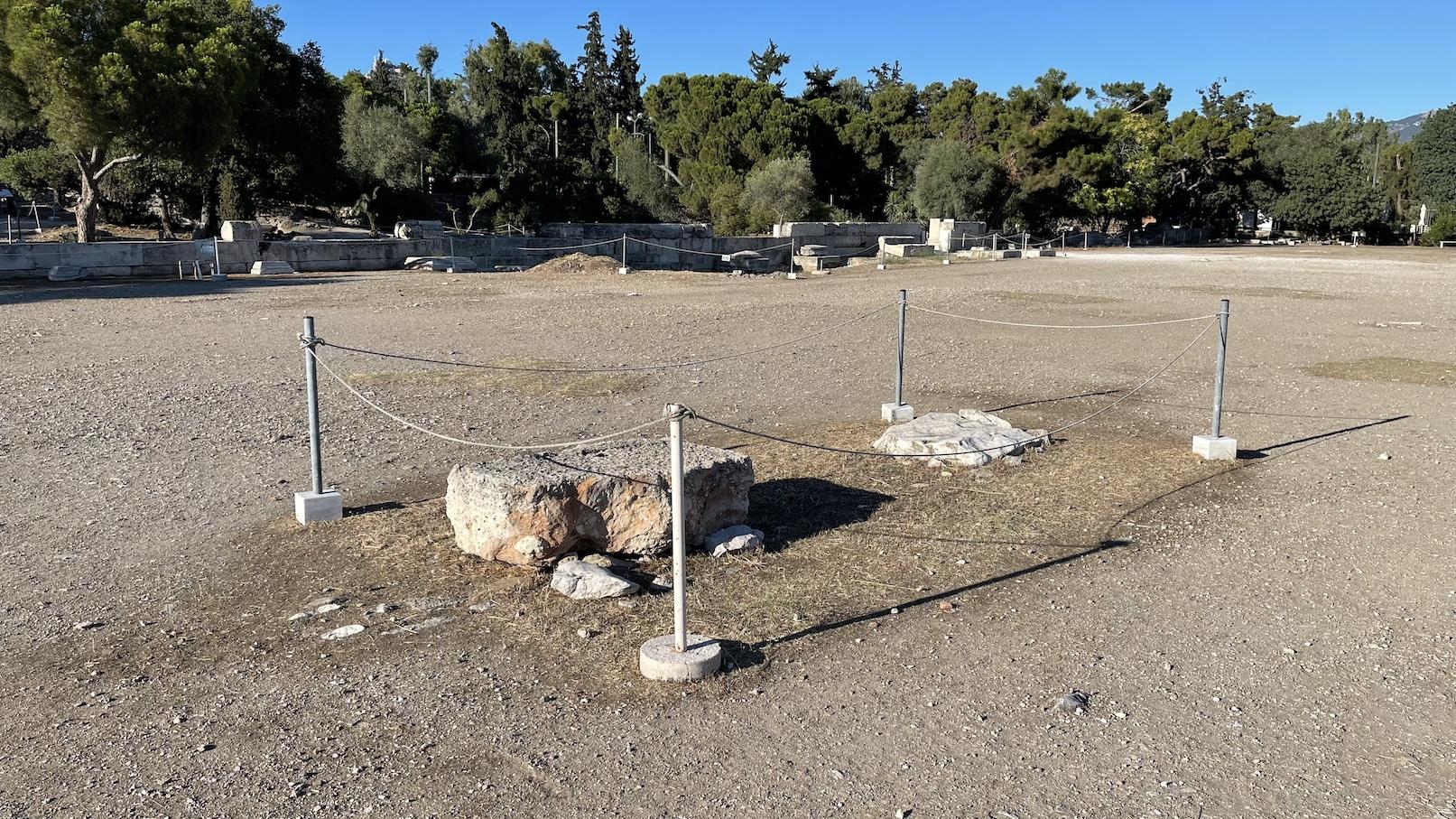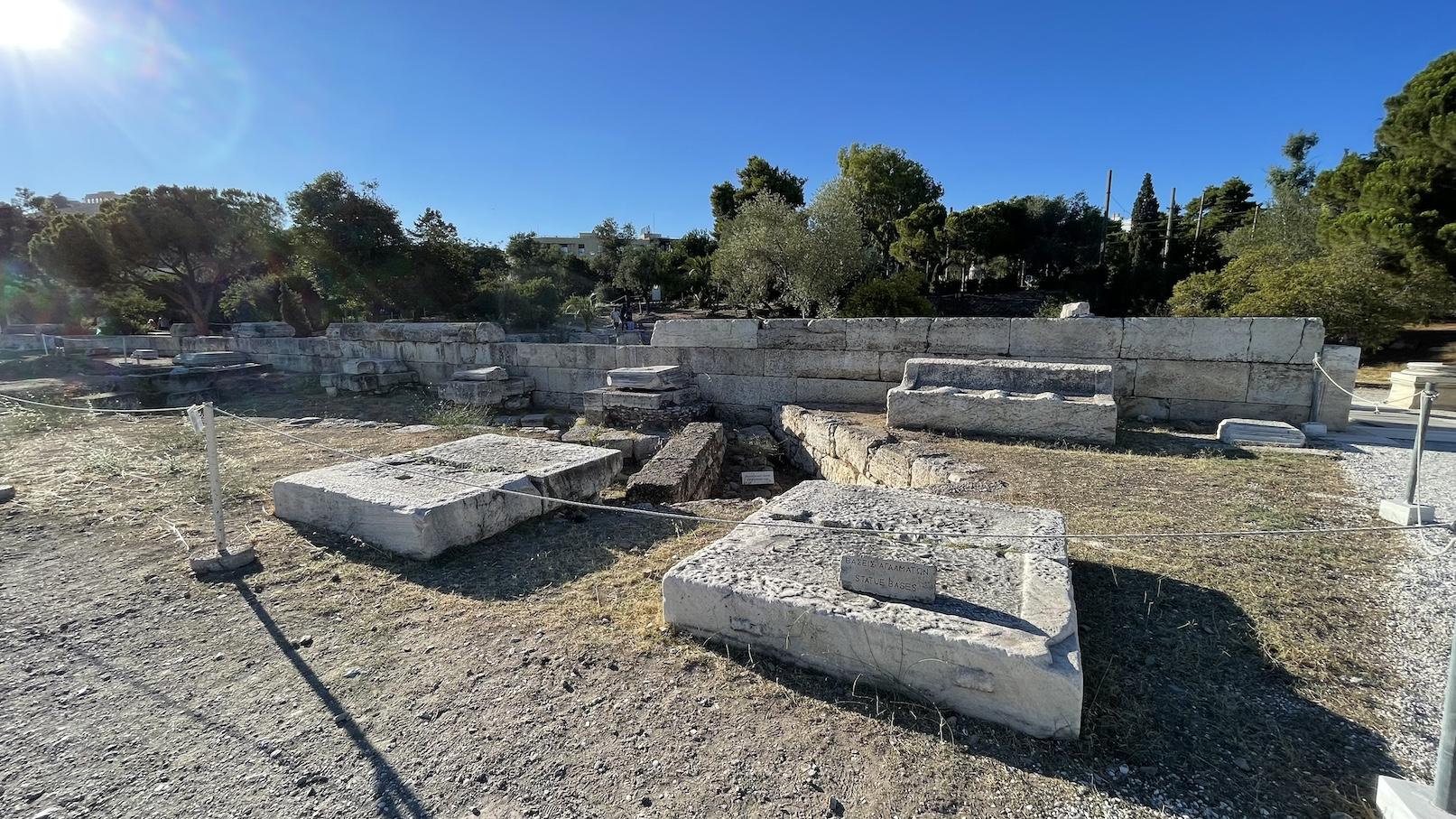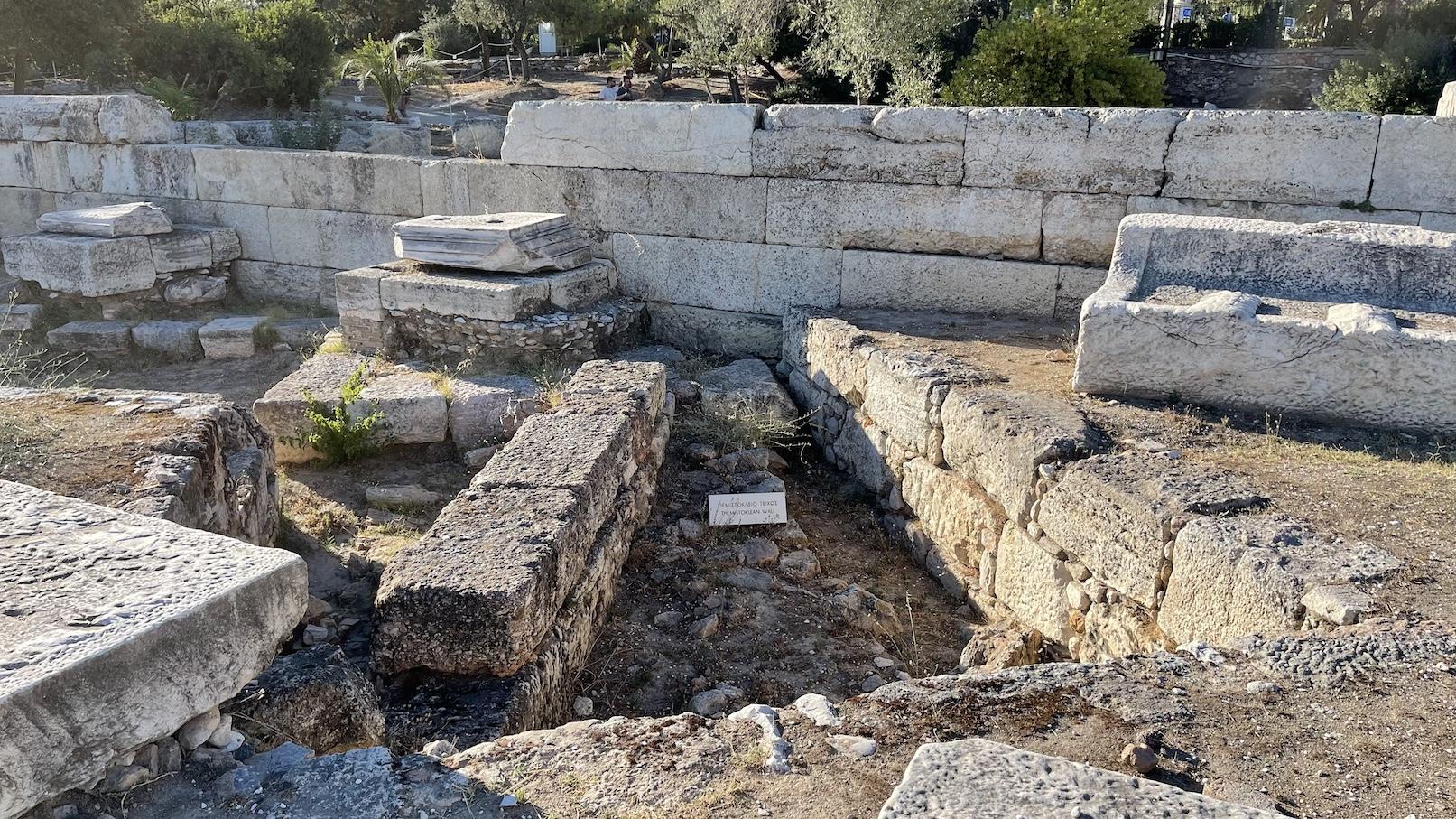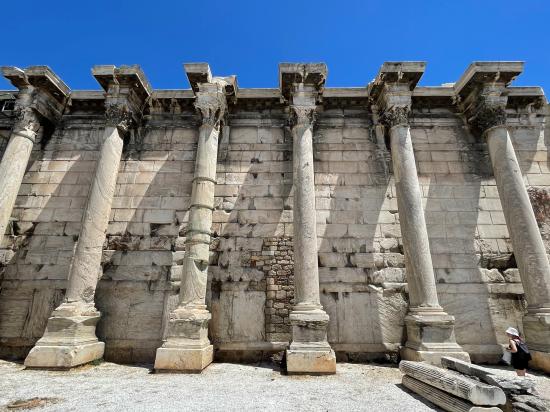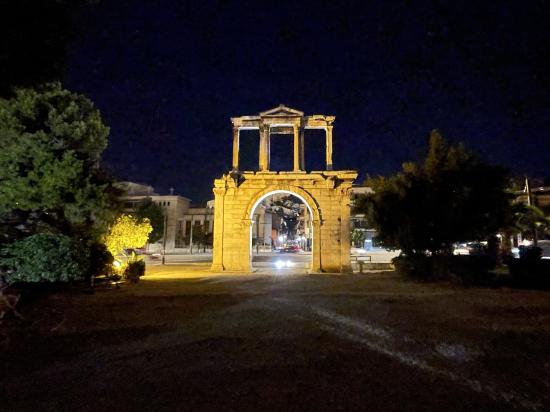The Olympeion
Free entry
The construction of the Olympeion began in the 6th century BC during the reign of the Athenian tyrant Peisistratos but was later abandoned due to lack of funds. It wasn't until the 2nd century AD, during the reign of the Roman Emperor Hadrian, that the temple was finally completed. Its grandeur rivaled that of the Parthenon, making it one of the largest temples in the ancient world.
The temple was dedicated to Zeus, the king of the gods in Greek mythology, and featured a colossal statue of the deity made of ivory and gold. Unfortunately, the statue and much of the temple's original decoration have been lost to time and plunder, but its towering columns and imposing ruins still inspire awe today.
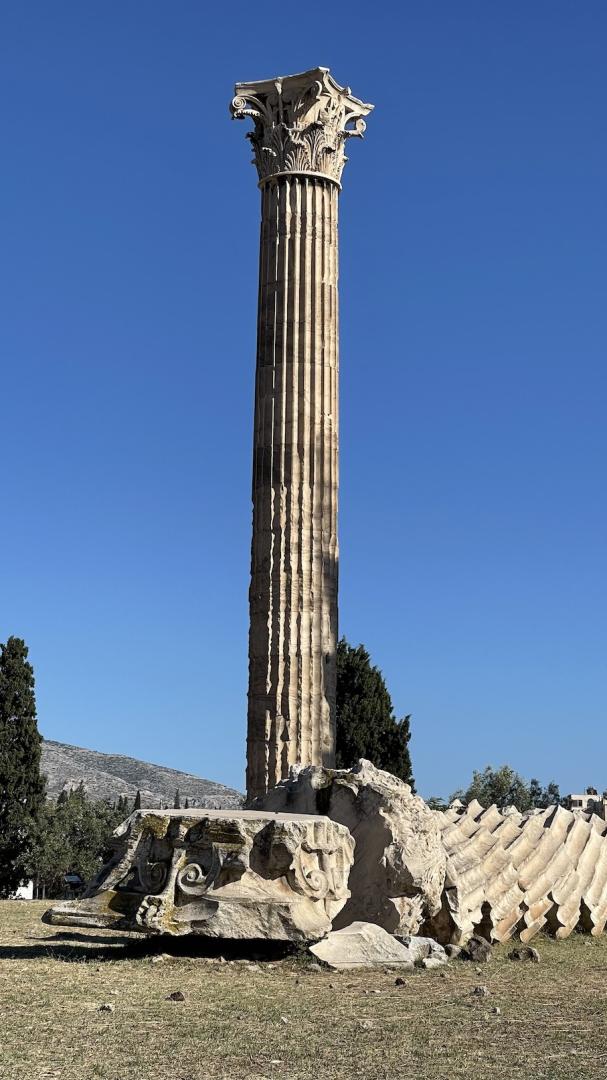
Column of the Olympeion in Athens
Upon arriving at the Olympeion, visitors are greeted by the imposing remains of the temple's colossal columns, which once supported its massive marble roof. Take a moment to marvel at the sheer scale of the structure and imagine the awe-inspiring sight it must have been in its heyday.
As you explore the site, don't miss the chance to admire the intricately carved Corinthian capitals atop the columns, which showcase the exquisite craftsmanship of ancient Greek and Roman artisans. Be sure to wander among the fallen columns and scattered fragments, where you can capture stunning photographs and soak in the ambiance of this historic landmark.
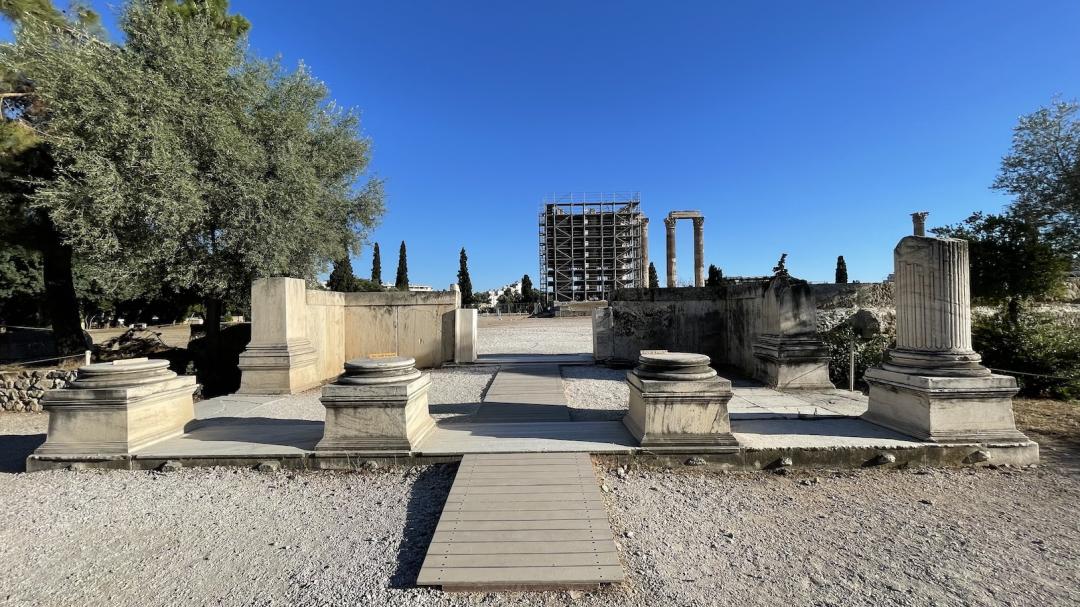
The Olympeion in Athens
Near the temple, you'll also find the Arch of Hadrian, a triumphal arch built by the Emperor Hadrian to commemorate the completion of the temple. This architectural marvel serves as a gateway to the ancient city and offers a glimpse into the grandeur of ancient Athens. Again we have wannabe Greek Hadrian, bailing out the bankrupt Athenians and trying to leave a gigantic footprint in his beloved city. Well he succeeded, I would say.
In addition to the Olympeion itself, visitors can explore the surrounding parkland, known as the Olympeion Park, which offers a peaceful retreat from the hustle and bustle of the city. Take a leisurely stroll through the shaded pathways, admire the lush greenery, and enjoy panoramic views of the Acropolis and the surrounding cityscape.
Getting to the Olympeion
The Olympeion is conveniently located in the heart of Athens, making it easily accessible to visitors. Whether you're staying in the city center or exploring other attractions, you can reach the temple on foot, by public transportation, or via taxi.
If you're coming from the historic Plaka neighborhood or the bustling Monastiraki Square, simply follow the pedestrian-friendly streets towards the southeast, and you'll soon arrive at the Olympeion. Alternatively, you can take the metro to the Acropolis station and enjoy a scenic stroll through the picturesque neighborhoods of Makrygianni and Koukaki before reaching the temple.
